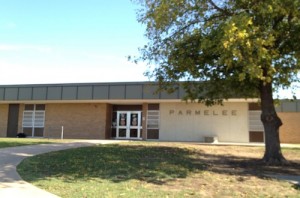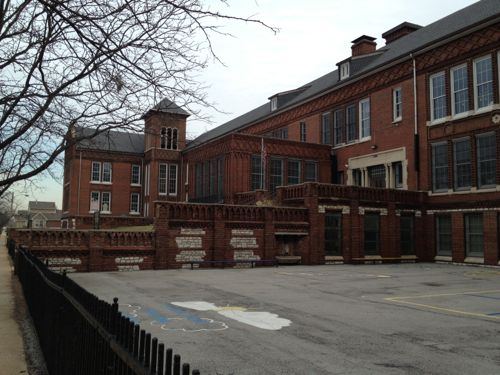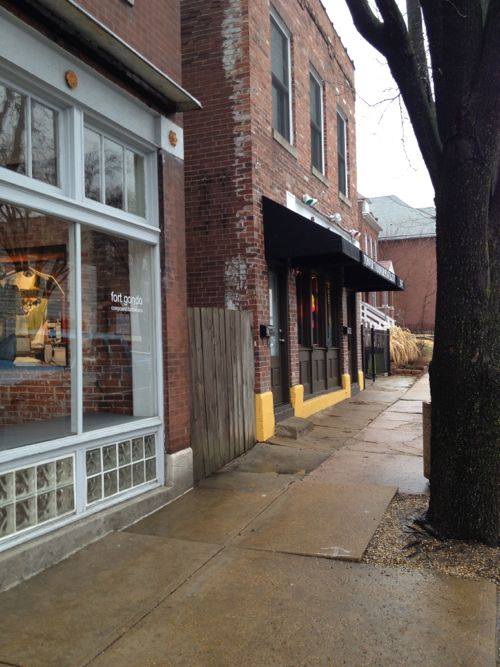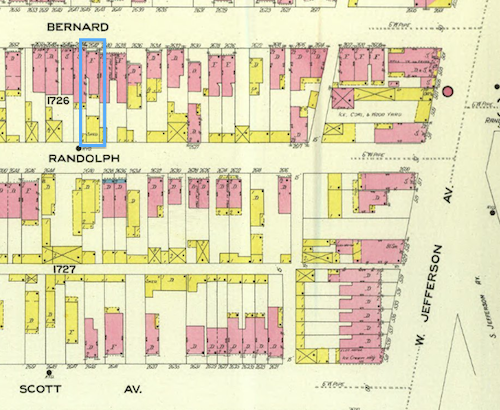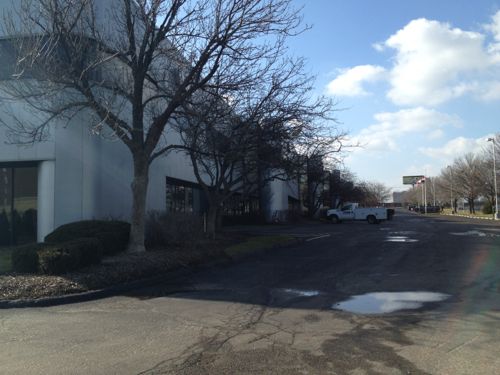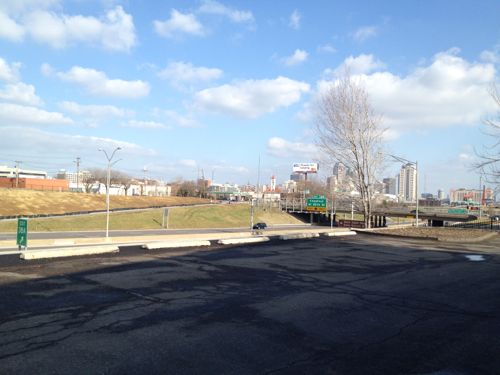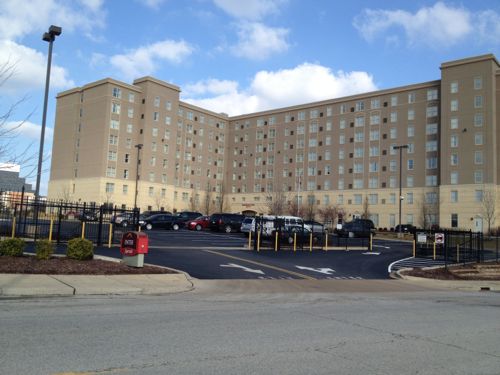The Bottle Undistrict
|
|
The soft drink 7-Up was once marketed as the uncola. For years now people have been trying to market the vacant land and a vacant warehouse north of the Edwards Jones Dome as The Bottle District. The first post where I mentioned The Bottle District was in August 2005 (Thoughts on St. Louis’ Proposed Riverfront Makeover, Lid Over I-70 and Mississippi River Bridge).
The Bottle District is a six-block area north of Downtown St. Louis, Missouri that is being redeveloped as a mixed-use entertainment and residential district. The area is located north of the city’s convention center and west of Laclede’s Landing.
The district is located in what was once known as the Kerry Patch neighborhood of the city, which was home to thousands of Irish immigrants in the 19th Century. The neighborhood gradually became more industrial in nature. In the 1920s this area was famous for animal stockyards and bottling companies.
McGuire Moving and Storage Company, a longtime business located in the area, announced plans for redeveloping the district as an entertainment destination in 2004. Noted architect Daniel Libeskind was hired to design the district. The Ghazi Company of Charlotte, North Carolina is the co-developer of the Bottle District.
The first phase of the redevelopment is scheduled to open in 2007. A groundbreaking ceremony was held on September 27, 2005. The first phase will include a Rawlings Sports museum, a Grand Prix Speedways kart-racing center, a boutique bowling alley, 250 residential units, and several restaurants. The first phase of the development is anticipated to cost $290 million and is being funded in part by $51.3 million in tax increment financing.
Several explanations for the origin of the name of the Bottle District have been given. It has been suggested that the name honors the longstanding connection between St. Louis and the brewing and bottling industries. Others have suggested that the name comes from bottles found buried on the property, or the many broken bottles found in the neighborhood. Finally, the site is noted for a decades old, 34-foot-tall (10 m) advertisement for Vess Soda, shaped like a bottle, which the developers intend to restore during the redevelopment. (Wikipedia)
Here we are years later and this district remains anything but a district. To me it’s The Bottle Undistrict.
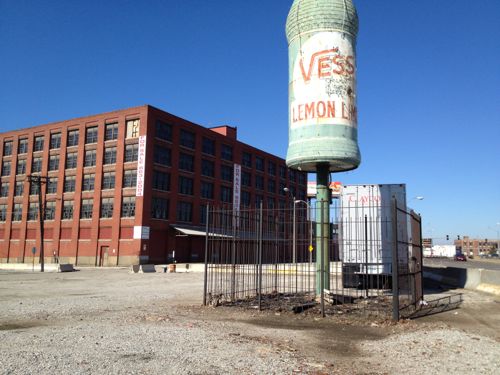
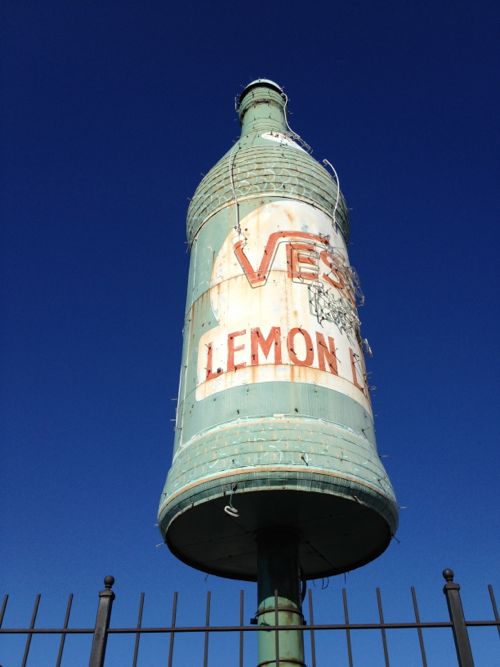
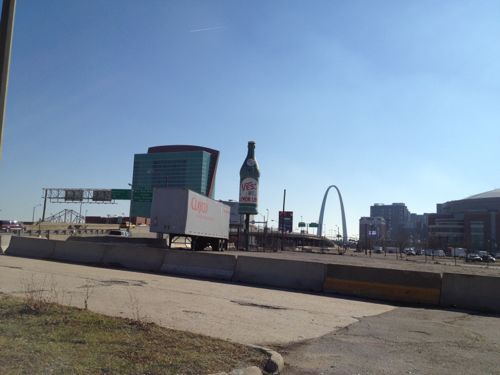
The problem here is this has been developer-driven planning. Big picture urban planning would have looked at how to develop this land and connect it to the west, the former Cochran public housing project, now the nice mixed-income Cambridge Heights neighborhood and renovated Neighborhood Gardens apartment development from 1935. Developers rarely think beyond the borders of their property, that takes municipal planning to knit together private parcels into a cohesive city.
We should be planning now for when the new I-70 bridge opens to the north, allowing the replacement of the highway lanes with a high volume boulevard instead. This district could then front onto the boulevard and more easily connect to the east. But our leadership doesn’t get it, to them the 1970 way is just fine.
– Steve Patterson
